January 18 was just another day in the life of Ajay Kumar. He woke up to a cold morning in his village, Juan, Sonipat, dropped his daughter and son at the local government-run akhara (rural gymnasium), then took them to school on his bike. He went about his work on his farm of 21 bighas (about 7 acres), and did the evening round of the akhara, waiting while his children finished, as was his daily practice. In the evening, he flicked on the television. On the news, familiar faces put him on alert: women wrestlers were in a sit-in protest and had levelled charges of sexual abuse against the Wrestling Federation of India (WFI) president, Brij Bhushan Sharan Singh. “I got into the car with coach Sanjeet Chhikara [from the akhara], and without thinking about it too much, headed to Delhi,” he says. They sat in for three days with the contingent at Jantar Mantar.
For Mr. Kumar, this was personal. His daughter, Khushi Arya, 14, had just won silver in 2022, in the under-50 kg category, U-15 Grand Prix in Bahadurgarh, Haryana. It has been five years of sweat and toil for Khushi, who initially had to face neighbours’ jibes at taking up a ‘man’s sport’. She still deals with a sporting facility that has no changing rooms for women, waiting to shower back home. And despite the Haryana government’s Khel Nursery Scheme, started to encourage grassroots athletes, the scholarship money has never been credited to her account.
Mr. Kumar thinks back to the beginnings: of taking his two children (his son is a year younger than Khushi) to the running track that skirts the mud pit of the akhara. “Khushi would beat her younger brother and even some of the wrestlers who were training at the Khajan Singh Akhada, on the 2- to 3-km track,” he says. The family got her enrolled, despite the fact that she was just one of two girls amongst 50-55 boys and men.
At the heart of Khushi’s initial success is her family, and the conversations they have, openly. “For the longest time I believed that nothing like this could happen to a wrestler and that WFI would treat its people, who are assets, in a dignified way, but I am not worried as long as my father is there,” says Khushi.
She is interrupted by her father, who calls her naive. He says he can accompany her to local camps, but not those run by WFI; parents are not permitted there. “If anything ever happens…if they are not listening to world champions like [Olympian] Sakshi Malik and [two-time medal winner at the World Championships] Vinesh Phogat, why would they listen to a powerless farmer like me?” says Mr. Kumar, rhetorically.
Her mother, Sharda Devi, is more pragmatic, saying that women face harassment everywhere, whether in sports or in schools. She also has more faith in the system resolving this, with the Oversight Committee being appointed to investigate the charges. She still wonders though, “ Sab jaan kar bhi bacche ko jaane dein, ya itni mehnat ke baad bacche ke bhavishya par laat maar dein? (Despite knowing everything, should we let our child go? Or after all this hard work should we beat her future down?)”
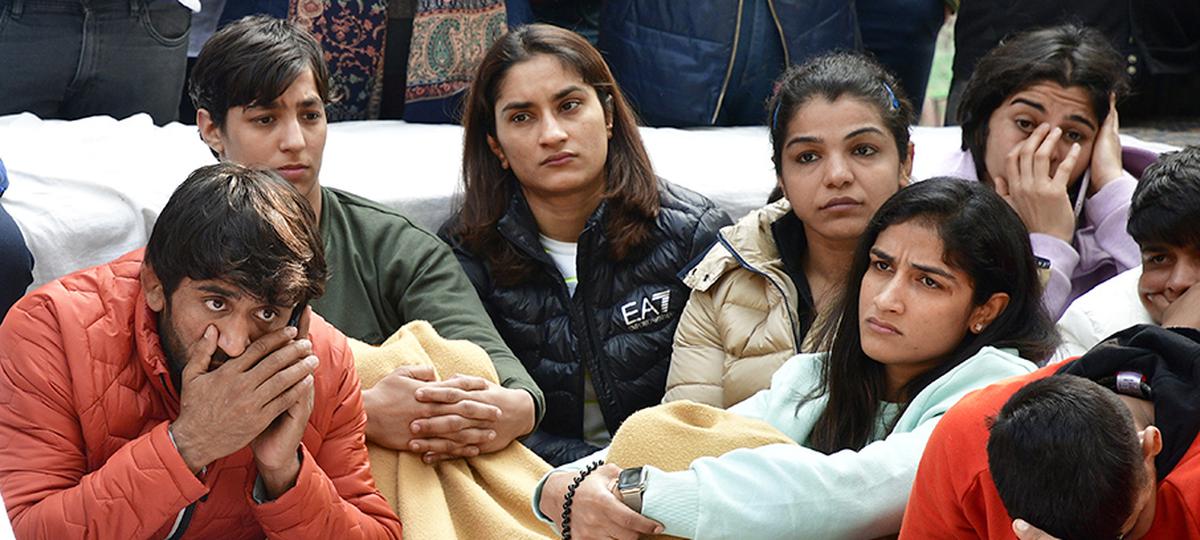
Khushi’s sporting hero Vinesh Phogat (centre) sits with Sakshi Malik and other wrestlers at the demonstration at Jantar Mantar in New Delhi.
| Photo Credit:
MOORTHY RV
Women wrestling with tradition
In what underscores Haryana’s dominance in women’s wrestling at the national level, Pankaj Nain, Director, Sports and Youth Affairs Department, Haryana, says that since 2002, women wrestlers from Haryana have won 26 medals, including eight golds, across a dozen international events: three Olympics, four Asian Games, and five Commonwealth Games. He claims about six States have expressed an interest in replicating the State’s sports policy, and a few had sent their delegations to study it.
In Haryana, community wrestling competitions, or dangals, are a tradition. Vikas Gulia, president, Baba Prakash Puri Sewa Samiti, one of the committees in Sonipat’s agrarian Purkhas village that has been organising dangals for over two decades now, says they started inviting female wrestlers about five years ago. The committee holds two dangals in a year — January 9 and November 18 — with the support of patrons, including local wrestlers who have landed government jobs under the sports quota, businessmen, and local politicians like councillor Satish Gulia, who donated ₹51,000 for their last dangal.
Wrestlers address the media during their protest against Wrestling Federation of India president Brij Bhushan Sharan Singh at Jantar Mantar in New Delhi.
| Photo Credit:
SHIV KUMAR PUSHPAKAR
Just as traditional akharas, run mostly by former wrestlers as a give-back gesture, make up for the inadequate sports infrastructure in the State, dangals act as crucial ‘software’ for budding wrestlers, helping them financially in the absence of monetary support from the government in the initial years, while also offering them an opportunity to compete and learn.
Mr. Gulia said the prize money at dangals ranged from a few thousand rupees to a few lakhs; many professional wrestlers survived on these community wrestling competitions held all through the year, except the monsoon. During the peak season, March to July, one dangal is held every day in the State on an average.
Sonipat, Rohtak, and Jhajjar remain the wrestling hubs of the State, but the trend has caught on in the adjoining districts of Hisar, Panipat, and Jind as well, with the opening up of private academies and training centres.
However, compared to their male counterparts, women may receive less prize money, sometimes as low as 50% of the men’s fee. Some organising committees object to women participating, and some are deterred by the ‘additional costs’ in terms of wrestling mats, toilets, and changing rooms.
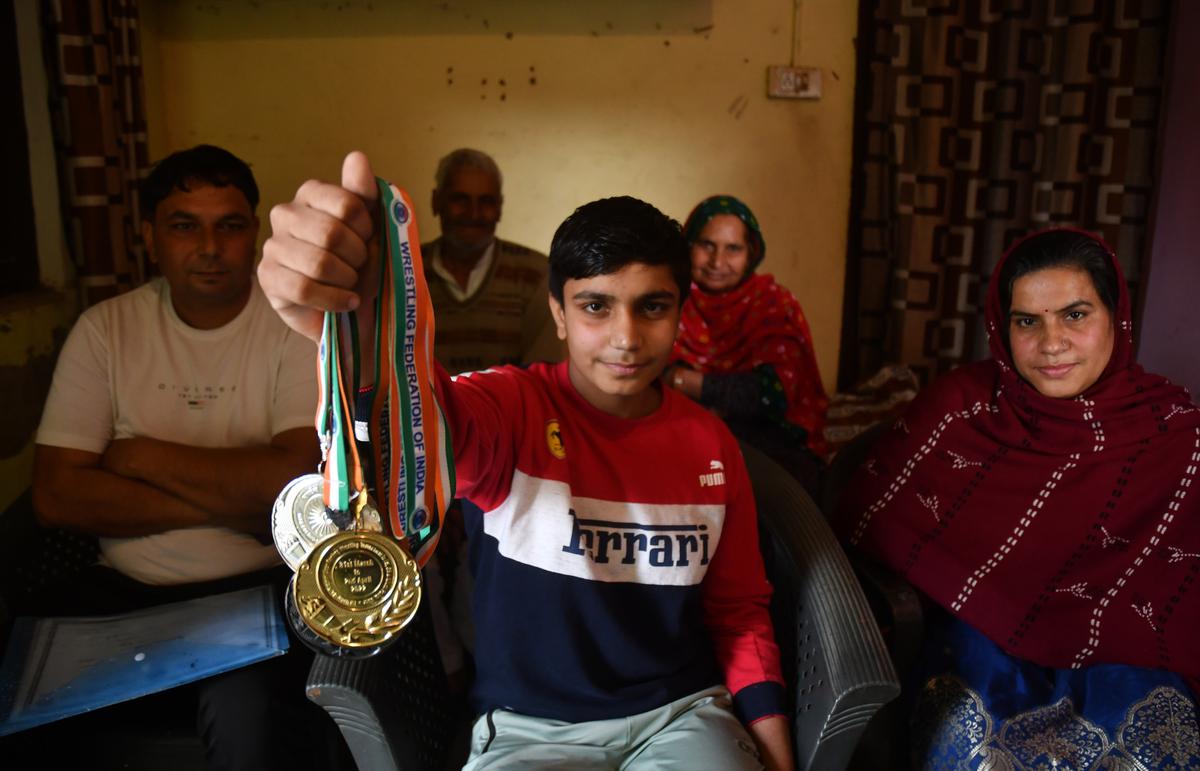
Khushi (centre) shows her medals, with her family around her: father Ajay Kumar, mother Sharda Devi, and grandparents (behind).
| Photo Credit:
SUSHIL KUMAR VERMA
The game changer
“It was after Geeta Phogat won India’s first-ever international gold medal at the [Delhi] Commonwealth Games (CWG) in 2010 that the craze for women’s wrestling in the State hit the roof. Soon, women’s wrestling was all the rage. It’s no surprise that the participation of female wrestlers at our dangals has grown manifold over these years from around 25-30 five years ago to 100-odd this year,” says Mr. Gulia, who is also a coach at the local Baba Prakash Puri akhara. “Olympic medallists Bajrang Punia and Sushil Kumar too have fought at the dangals in our village before they achieved stardom,” Mr. Gulia proclaims proudly, as he instructs girls and boys, teaching them how to hold a grip and select partners, while shouting for someone to warm up properly before entering the ring.
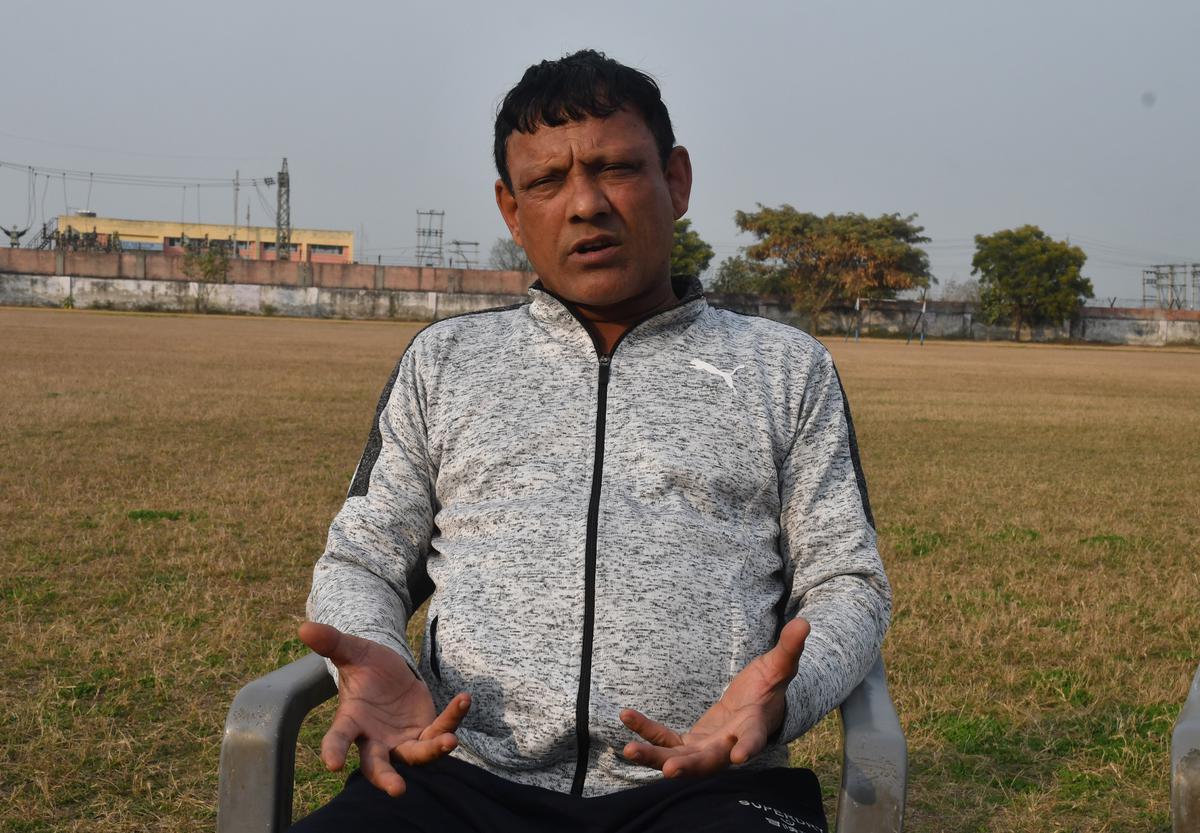
Wrestling coach Sanji at Juan village in Haryana.
| Photo Credit:
SUSHIL KUMAR VERMA
Suman Kundu, a bronze medallist at CWG 2010, tells us why the event was a turning point for girls in Haryana: “The stellar performance of the women wrestlers from the State, the wide media coverage, and above all, the opportunity for local villagers to watch the women perform live at an international event brought a sea change in their perception towards women wrestling,” says Ms. Kundu, now a Haryana Police Sub-Inspector, posted at Rohtak.
She recalls how fellow villagers, who had always snubbed her before the games despite her achievements in wrestling, gave her a “hero’s welcome” on her return to the village after the CWG feat. “Both my father and coach had to face everyone’s ire for years for ‘letting me’ choose wrestling. Haunted by the taunts, my father even stopped socialising, but continued to support me to give me a better future. My maternal uncles too did not approve of his decision and our families were not on talking terms for two years. But the Commonwealth Games in 2010 changed it all overnight, not just for me but for all girls out there. And the stadiums were flooded with aspiring women wrestlers after the 2014 Commonwealth Games and 2016 Olympics,” says Ms. Kundu, now a mother of two.
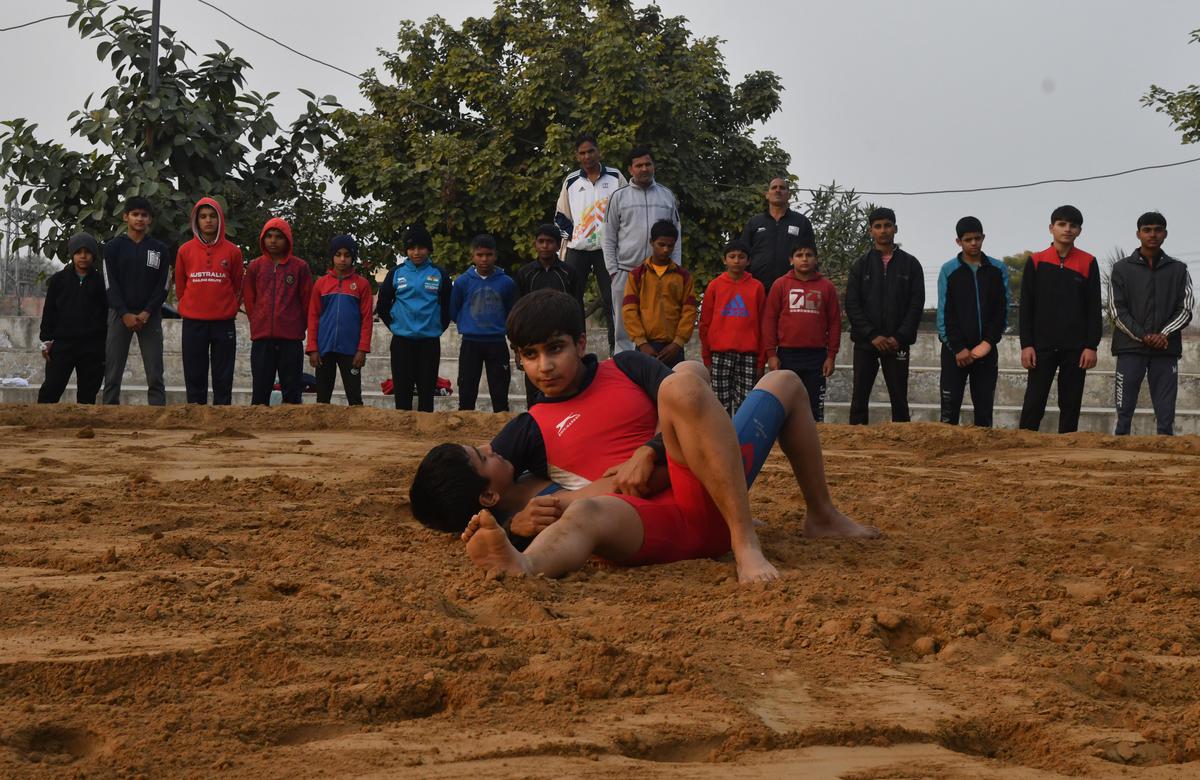
Khushi Arya during a practice session.
| Photo Credit:
SUSHIL KUMAR VERMA
For girls like Khushi, the struggle has been more short-lived, with neighbours quickly changing their ‘punches’ for praise when she began winning at the local level. She also has role models to look up to. Hers is Vinesh Phogat, and her voice changes when she talks about the time Ms. Phogat met her at a training camp and praised her moves.
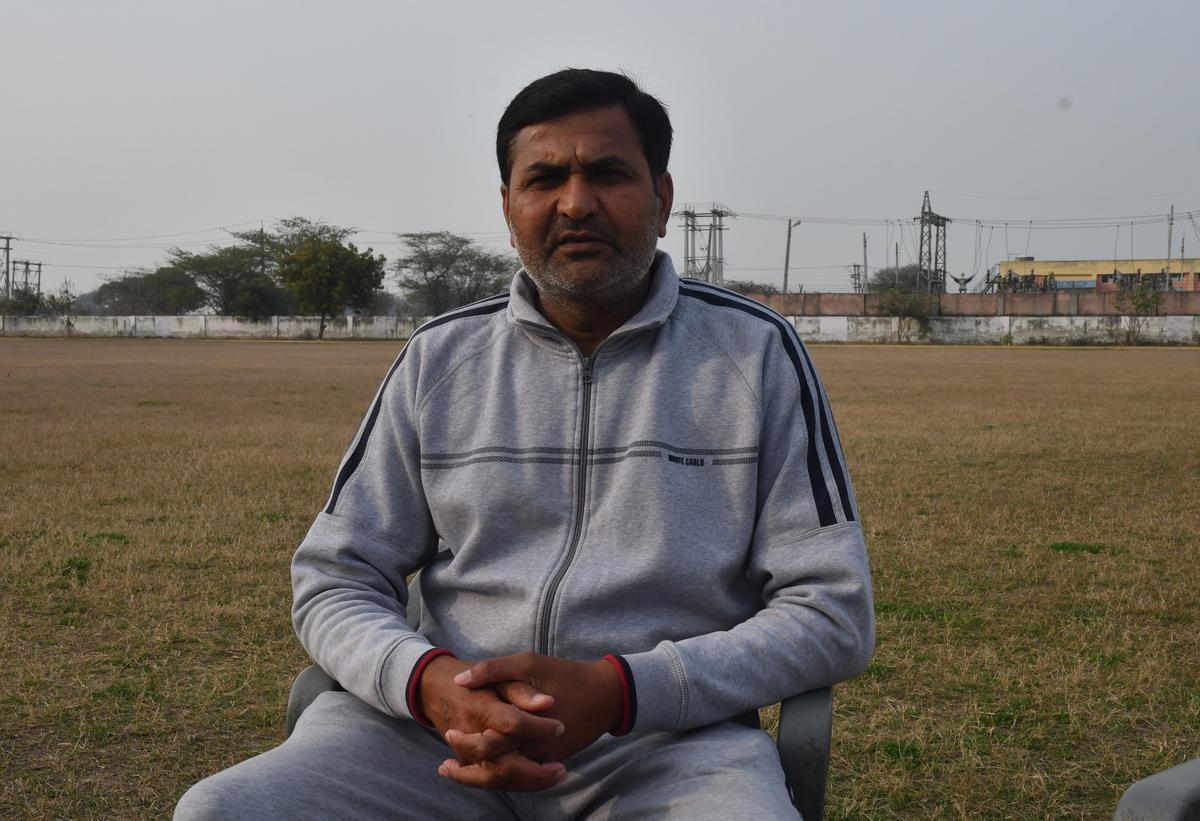
Wrestling coach Sunil at Juan village in Haryana.
| Photo Credit:
SUSHIL KUMAR VERMA
Khushi is focussed on making it to the international circuit, but with the contradictions of a regular teen, what makes her smile is the fact that she’s the first girl student to be selected sports captain at her school, South Point International in Ratangarh, Ambala district. It matters to her that her friends admire her and that she’s seen as someone who cannot be fooled with. She’s proud of the way her body has changed to be more muscular and likes to keep her hair short. “Men are more powerful,” she says, and enjoys the challenge of training with them, through period pains and stains. The boys treat her like one of them.
Retired District Sports Officer Ishwar Dahiya credits Chandgi Ram, a freestyle wrestler from Hisar’s Sisai village, for laying the foundation of women’s wrestling in Haryana in the late 1990s by encouraging his daughters, Sonika and Deepika Kaliraman, to take up the sport despite stiff social opposition. Mr. Dahiya remembers training his first-ever girls batch in Rohtak, in 2002.
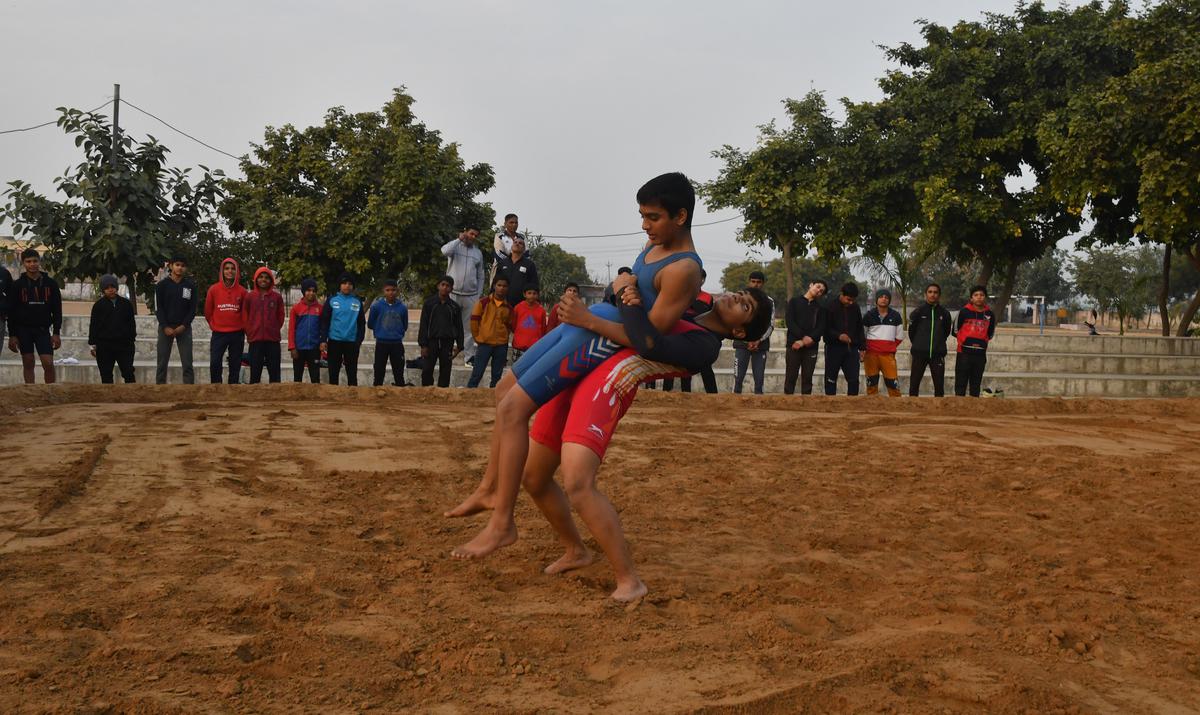
Khushi Arya overpowers her opponent.
| Photo Credit:
SUSHIL KUMAR VERMA
“Initially, it was fame and recognition that drew the girls to wrestling courts in Haryana, but the successive State governments, especially Bhupinder Singh Hooda’s Congress regime, tweaked the sports policy to shower the players with heftier cash prize money and government jobs, making it a lucrative proposition. And with Haryana always dominating the national wrestling space, the girls in the State grabbed the opportunity with both hands. It pulled families, both with wrestling and non-wrestling backgrounds, to the sport in a big way,” says the 66-year-old.
(From left) Olympians Gagan Narang, Yogeshwar Dutt, Sushil Kumar and Saina Nehwal who secured medals in the London Olympics with Haryana Chief Minister Bhupinder Singh Hooda at a felicitation function at Gohana in Sonepat on August 26, 2012.
| Photo Credit:
AKHILESH KUMAR
Haryana Chief Minister Bhupinder Singh Hooda presenting an award to Sushil Kumar, gold medal winner in wrestling at the Commonwealth Games 2010, in Sonepat on November 1, 2010.
| Photo Credit:
AKHILESH KUMAR
The Hooda government filled hundreds of vacancies for coaches, set up residential training centres for different sports and amended the Haryana Police Service rules to reserve 3% permanent Deputy Superintendent of Police posts for direct appointment of outstanding sportspersons. Many players such as hockey’s Mamta Kharab, wrestler Geetika Jakhar, cricketer Joginder Sharma, boxer Vijender Singh, and incumbent Minister and hockey player Sandeep Singh reaped the benefits of the policy.
Khushi’s mother refers to a popular saying in Haryanvi: it says that while preparing a wrestler, all four corners of a house are shaken, in a reference to the economic, social, physical, and emotional labour that the whole family goes through. The women wrestlers of Haryana are shaking more than a house — they are in fact fighting injustice, entitlement, and a whole male mindset we loosely call patriarchy.


